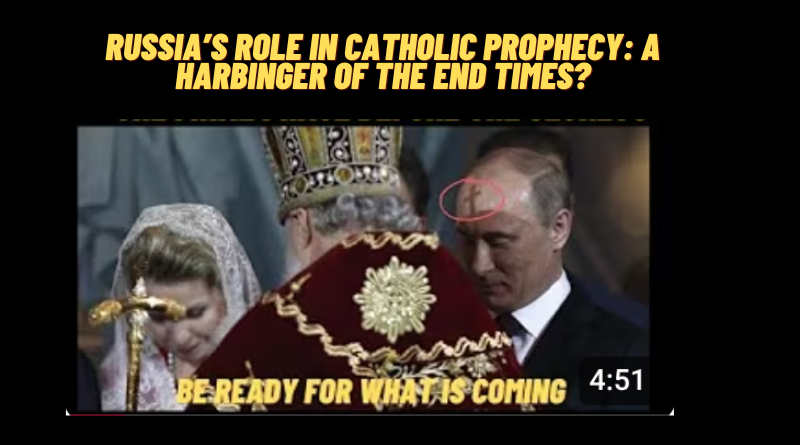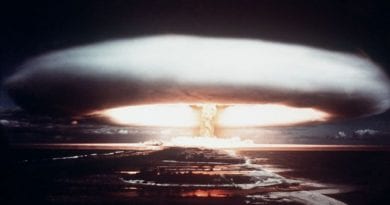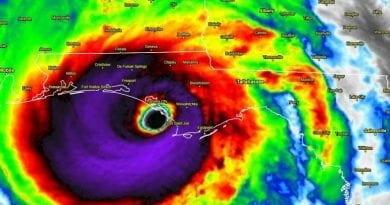Signs : Russia / Catholic Prophecy: A Harbinger of the End Times? “World Is Moving Towards Great Danger”
Russian President Vladimir Putin said on Monday that the involvement of powers from outside the Middle East in the conflict with Iran was moving the world towards great danger.
Trump threatens to unleash ‘most lethal weapons ever built’ if Iran is supplied nukes June 23, 2025
By Stephen Ryan
As the world teeters on the edge of uncertainty, with geopolitical tensions and spiritual crises intensifying, Catholic prophecy casts a haunting light on Russia’s pivotal role in the unfolding of the end times. The apparitions of Our Lady at Fatima in 1917 and the ongoing messages from Medjugorje since 1981 weave a narrative of divine warning, spiritual warfare, and ultimate redemption, with Russia at its core. From an eschatological perspective, these private revelations suggest that Russia’s actions—its errors, conversion, or chastisement—could shape the destiny of humanity as we approach the final chapters of salvation history. This article explores Russia’s prophetic significance, drawing on the messages of Fatima and Medjugorje, and interprets them through the lens of an end-times worldview.
Fatima: Russia as the Instrument of Divine Judgment
In 1917, as the world was engulfed in the horrors of World War I and Russia stood on the brink of Bolshevik revolution, the Blessed Virgin Mary appeared to three shepherd children—Lúcia dos Santos, Francisco Marto, and Jacinta Marto—in Fatima, Portugal. Her messages, delivered between May and October, carried apocalyptic weight, with Russia emerging as a central figure in God’s plan for humanity. On July 13, 1917, Our Lady revealed the second part of the Fatima secret, warning, “If my requests are heeded, Russia will be converted, and there will be peace; if not, she will spread her errors throughout the world, causing wars and persecutions of the Church. The good will be martyred, the Holy Father will have much to suffer, various nations will be annihilated.

This prophecy, given just months before the October Revolution that ushered in Soviet communism, identified Russia as the source of “errors” that would plague the 20th century. The rise of atheism, the persecution of Christians, and the spread of Marxist ideology fulfilled Our Lady’s warning, as the Soviet Union’s influence sparked wars, genocides, and spiritual desolation. From an end-times perspective, Fatima’s second secret suggests that Russia’s role extends beyond historical communism to a broader spiritual battle, where its failure to convert could precipitate global chastisements. Sister Lúcia, in a 1982 letter to Pope John Paul II, interpreted the third secret as a “symbolic revelation” tied to Russia’s errors, noting that humanity’s refusal to heed Our Lady’s call was leading the world “little by little with great strides” toward further fulfillment of this prophecy.
Our Lady’s request for the consecration of Russia to her Immaculate Heart, reiterated in 1929 at Pontevedra, Spain, was a divine remedy to avert catastrophe. Popes Pius XII, Paul VI, and John Paul II performed consecrations, but debates persist over their compliance with Our Lady’s precise conditions—namely, a public act by the pope in union with all bishops. Sister Lúcia reportedly confirmed that John Paul II’s 1984 consecration, though not explicitly naming Russia, was accepted by Heaven, yet some traditionalists argue that Russia’s ongoing geopolitical aggression and spiritual struggles indicate an incomplete conversion. On March 25, 2022, amid Russia’s invasion of Ukraine, Pope Francis explicitly consecrated Russia and Ukraine to the Immaculate Heart, fulfilling the request with unprecedented clarity. From an eschatological view, this act may mark a turning point, either toward Russia’s prophesied conversion or a final reckoning if humanity persists in sin.
The third secret of Fatima, revealed in 2000, depicts a “bishop in white” shot by soldiers, interpreted by the Vatican as the 1981 assassination attempt on Pope John Paul II. However, some speculate that this vision also foreshadows a future persecution of the Church, with Russia as a potential agent of chastisement. A 2021 prophecy attributed to Blessed Elena Aiello claims, “Russia will march upon all nations of Europe, particularly Italy, and will raise her flag over the dome of St. Peter’s,” suggesting a physical and spiritual invasion. While private revelations like Aiello’s require discernment, they reinforce Fatima’s warning that Russia’s role in the end times could involve both destruction and divine intervention, depending on humanity’s response to God’s call.
Medjugorje: Russia’s Redemption and the Triumph of the Immaculate Heart
The apparitions at Medjugorje, Bosnia and Herzegovina, beginning on June 24, 1981, are often seen as a continuation and fulfillment of Fatima’s prophetic mission. Though the Vatican’s 2024 nihil obstat permits devotion to Medjugorje without affirming the apparitions’ supernatural character, the messages attributed to Our Lady, the Queen of Peace, carry striking parallels to Fatima, particularly regarding Russia. On November 1, 1981, just six months after the assassination attempt on Pope John Paul II, visionary Mirjana Dragičević-Soldo reported that Our Lady said, “Russia will come to glorify God the most.” This prophecy, delivered during the height of the Cold War when the Soviet Union was an atheist superpower, seemed improbable, yet it aligns with Fatima’s promise of Russia’s conversion.
From an end-times perspective, Medjugorje’s messages suggest that Russia’s spiritual revival could herald the triumph of Mary’s Immaculate Heart, a precursor to Christ’s ultimate victory. The reported message that “Russia will come to glorify God the most” points to a dramatic transformation, where a nation once synonymous with godlessness becomes a beacon of faith. This prophecy has gained traction amid Russia’s post-Soviet religious resurgence, with the Russian Orthodox Church regaining influence and President Vladimir Putin publicly embracing Christian symbolism. However, skeptics note Russia’s ongoing geopolitical conflicts, such as the 2022 invasion of Ukraine, as evidence that its conversion remains incomplete, potentially aligning with Fatima’s warning of continued “errors.”
Medjugorje’s ten secrets, entrusted to the visionaries and yet to be revealed, are believed to include events tied to global chastisements and spiritual renewal. Some speculate that Russia’s role in these secrets mirrors Fatima’s third secret, involving both tribulation and redemption. The late Father Malachi Martin, who claimed to have read Fatima’s third secret, suggested in the 1990s that Russia would first spread the “error of Communism” but later “heal itself” and lead the world toward salvation, starting in Ukraine and Russia. This aligns with Medjugorje’s emphasis on Russia’s potential to glorify God, suggesting that its conversion could trigger a global spiritual awakening, a hallmark of the end times.
Pope John Paul II reportedly viewed Medjugorje as “the fulfillment of Fatima,” a sentiment echoed by Bishop Pavol Hnilica, who quoted the pope saying, “Medjugorje is the continuation of Fatima, it is the completion of Fatima!” This connection underscores Russia’s dual role in both apparitions: as a source of error and a vessel of divine grace. Medjugorje’s call to prayer, fasting, and conversion, combined with its prophecy of Russia’s glorification of God, frames Russia as a linchpin in the eschatological drama, where its actions could either hasten chastisement or usher in the promised period of peace.
An End-Times Interpretation
From an eschatological viewpoint, Russia’s role in Catholic prophecy is both ominous and hopeful. Fatima’s warnings paint Russia as an instrument of divine chastisement, its “errors” manifesting in atheism, war, and persecution. The 20th century bore witness to this, with Soviet communism spreading ideological and physical destruction. Yet, the prophecy’s conditional nature—“if my requests are heeded”—suggests that Russia’s fate, and thus the world’s, hinges on humanity’s response to Our Lady’s call for repentance and consecration. The 2022 consecration by Pope Francis, prompted by Ukraine’s bishops amid war, may have fulfilled Fatima’s request, but ongoing global conflicts raise questions about whether the promised peace is imminent or if further tribulations await.
Medjugorje’s messages offer a counterpoint, emphasizing Russia’s potential for redemption. The prophecy that Russia will “glorify God the most” evokes the Book of Revelation’s vision of a renewed world, where nations turn to Christ before His return. However, Medjugorje’s unrevealed secrets, coupled with warnings of chastisements, suggest that Russia’s conversion may follow a period of trial, possibly involving war or spiritual upheaval. Some commentators, like those on X, speculate that Russia could become a “place of refuge for Christians” fleeing an antichrist, aligning with apocalyptic scenarios of a remnant Church enduring persecution.
The interplay of Fatima and Medjugorje suggests a two-phase role for Russia: first as a catalyst for global chastisement, then as a leader in spiritual renewal. This duality mirrors the Catholic understanding of the end times, where tribulation precedes triumph. The Catechism of the Catholic Church (CCC 675) warns of a “final trial” that will shake the faith, potentially involving apostasy and persecution, before Christ’s return. Russia’s prophetic role may fit this framework, with its “errors” contributing to the trial and its conversion signaling the dawn of Mary’s triumph.
Discernment and Caution
As private revelations, the messages of Fatima and Medjugorje require discernment. The Church distinguishes between public revelation, fulfilled in Christ, and private revelations, which guide human acts but are not binding. Fatima’s apparitions are approved, with the 1930 declaration by Bishop José Alves Correia da Silva deeming them “worthy of belief.” Medjugorje, however, remains under scrutiny, with the Vatican’s 2024 nihil obstat encouraging devotion but withholding judgment on the apparitions’ authenticity. Catholics must test these prophecies against Scripture and Tradition, avoiding sensationalism or fear-driven interpretations.
Critics argue that Medjugorje’s messages sometimes lack the theological precision of Fatima, and some traditionalists claim Medjugorje downplays Fatima’s anti-communist focus. Others, like Father Grumel, have called Medjugorje a “diabolic fraud,” though its defenders point to millions of conversions and confessions as evidence of spiritual fruit. Fatima’s third secret has also sparked controversy, with figures like Antonio Socci questioning whether the Vatican revealed its entirety in 2000. These debates underscore the need for prudence, as end-times speculation can distract from the core call of both apparitions: prayer, repentance, and trust in God.
Conclusion: Russia at the Crossroads of Eternity
In the tapestry of Catholic prophecy, Russia emerges as a paradoxical figure—a nation capable of plunging the world into chaos or leading it to God. Fatima’s warnings of Russia’s errors and the need for its consecration frame it as a potential harbinger of end-times tribulation, while Medjugorje’s prophecy of its glorification offers hope of redemption. Together, these apparitions suggest that Russia stands at a spiritual crossroads, its path determining whether humanity faces chastisement or peace. As global tensions rise and faith wanes, the messages of Our Lady call Catholics to wield the “five stones” of Medjugorje—prayer, fasting, Scripture, confession, and the Eucharist—and the Rosary of Fatima to prepare for what lies ahead. Whether Russia’s role unfolds as judgment or salvation, the ultimate promise remains: “In the end, my Immaculate Heart will triumph.” For those with eyes to see, Russia’s prophetic destiny is a summons to conversion, a reminder that the end times are not merely a future event but a present call to holiness.





